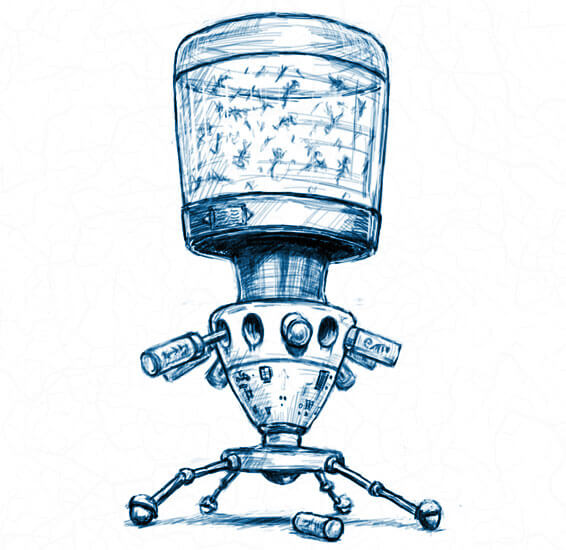 (Mobile) Quidnac Eureka Device or QED
(Mobile) Quidnac Eureka Device or QED

Although informally termed “the water cooler effect” it has long been known that informal gatherings of people in the workplace can sometimes produce amazingly beneficial outcomes, almost as a side-effect from these casual brainstorming sessions. New ideas and concepts spring into life in an environment outside of the rigid atmosphere of an intensely commercial development lab.
Ironically, during one such conversation between two senior DNA research scientists, the idea of the Eureka Machine was born: why not utilise, yet also enhance, the “water cooler effect” somehow?
In an effort to exploit this, research teams at Pearson’s Development Labs (“we invent the things today that make you live to see tomorrow”) set to work on a two-pronged R&D project – one, to develop a microscopic cognitive enhancement computer based around existing Quidnac technology (see reference at end) and two, create a simple deployment mechanism to introduce these items to an unsuspecting workforce, vis, the water cooler extraordinaire.
Starting with the premise of a Quidnac coded to bond with human neurons, and able to target those areas of the brain that deal with creative thought, Pearson scientists developed the DNA Unified Neuro-Cognitive Enhancement (DUNCE) virus: a microscopic dna computer codified to the human brain.
As is so often the case under the pressure of a nation at war, the device was developed rapidly and with the bare minimum of testing. Yet those limited tests showed huge promise, whereby primates dosed with fluid containing DUNCE virii showed an amazing leap in the qualities that Pearson was looking for: creativity and abstract thought.
Days later the first of the new “water coolers” were in place throughout the labs, and staff and crew were soon innocently dosing themselves with microscopic Quidnacs coded to attach to their human brain cells. And sure enough, for a short time the new ideas almost literally dreamed-up daily by development staff were nothing short of stellar.
Alas, it was almost simultaneous with the alarming reports that began to come from the animal testing labs. Primates (once termed “enhanced” in lab notes, but soon referred to as “infected”) had begun to show classic symptoms of mental imbalance: dementia, catatonia, schizophrenia, paranoia… it seemed that each case was unique. What was worse however was that the level of genius remained undiminished, and fraught staff at the primate labs found themselves fighting a war of their own against insane, intelligent and physically powerful primates. Lab footage from the time makes for harrowing viewing.
Ultimately of course, the poor creatures were all destroyed, but the much more serious problem remained; what about the people who were also carrying the virus? Great efforts were made to contain those affected, but it is generally known that several remain unaccounted for, and others have left their mark on history in other ways…
Shown here is a prototype QED displaying the artists impression of the microscopic DUNCE virii. The virus is completely undetectable, and once ingested is impossible to “cure”
Related post:
Quidnac DNA
 Oldest post
Oldest post Newest post
Newest post 



I’m putting one in place in my office this weekend.
A most interesting machine. Perhaps to combat the effects of paranoia on heightened creativity and abstract thought, the liquid could be drunk with some form of opiate thus using the drug as a blame for all the negative side effects.
Your suggestion sounds reasonable, dmk.